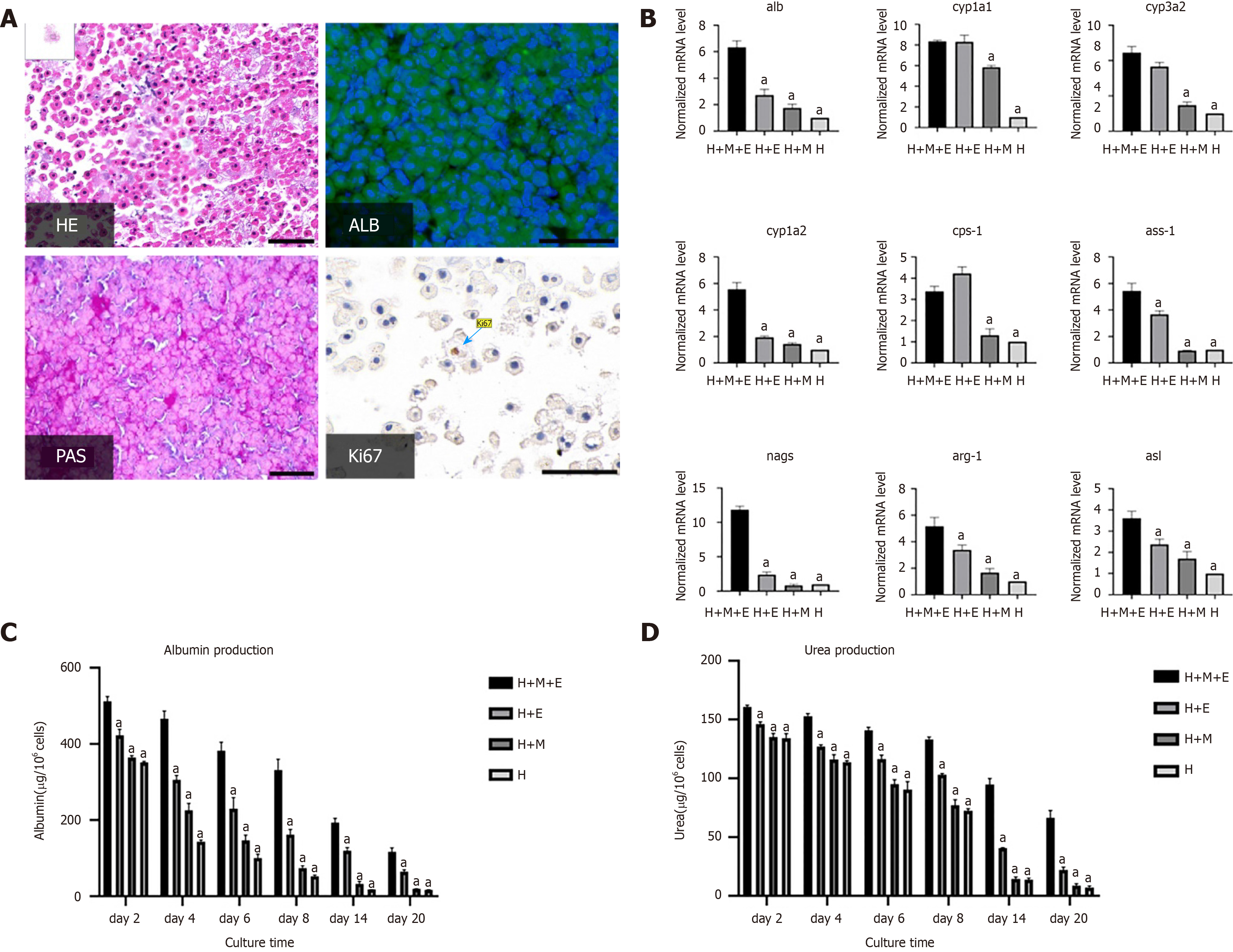Copyright
©The Author(s) 2020.
World J Stem Cells. Oct 26, 2020; 12(10): 1184-1195
Published online Oct 26, 2020. doi: 10.4252/wjsc.v12.i10.1184
Published online Oct 26, 2020. doi: 10.4252/wjsc.v12.i10.1184
Figure 3 Liver organoids maintain the function of hepatocytes and prolong their survival time.
A: Hematoxylin and eosin (HE) staining, periodic acid-Schiff (PAS) staining, immunofluorescence staining for albumin (ALB; green), and immunohistochemical staining for Ki67. The nuclei were counterstained with DAPI (blue). Scale bars = 100 μm; B: Gene expression analysis by q-PCR. Data were normalized to hepatocytes (H group); C: Secretion of albumin was measured by ELISA on days 2, 4, 6, 8, 14, and 20; D: Urea synthesis was measured on days 2, 4, 6, 8, 14, and 20. aP < 0.05 vs the organoid (H+M+E group). H+M+E group: Hepatocytes and MSCs seeded on ECM-gel pre-coated plate; H+E: Hepatocytes seeded on ECM-gel pre-coated plate; H+M: Hepatocytes and MSCs seeded on ECM-gel free plate; H group: Hepatocytes seeded on ECM-gel free plate; ECM: Extracellular matrix.
- Citation: He YT, Zhu XL, Li SF, Zhang BQ, Li Y, Wu Q, Zhang YL, Zhou YY, Li L, Qi YN, Bao J, Bu H. Creating rat hepatocyte organoid as an in vitro model for drug testing. World J Stem Cells 2020; 12(10): 1184-1195
- URL: https://www.wjgnet.com/1948-0210/full/v12/i10/1184.htm
- DOI: https://dx.doi.org/10.4252/wjsc.v12.i10.1184









